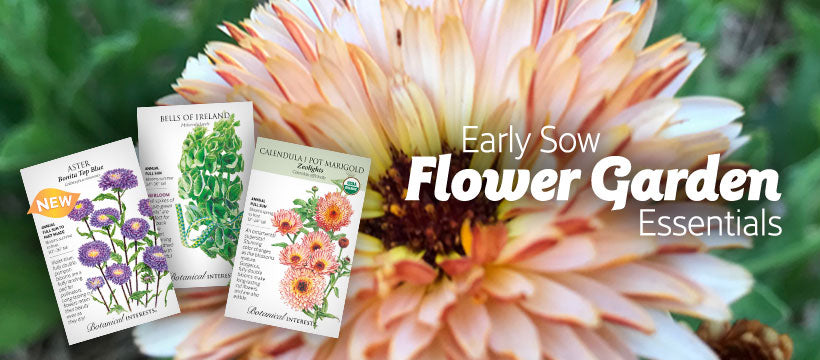Believe it or not, there is more than one kind of marigold! They typically vary in height and bloom size. African marigolds (Tagetes erecta) are also known as American or Aztec marigolds and are some of the largest with double, 4"–5" blooms on 2'–3' tall plants. French marigolds (Tagetes patula) have smaller, double blooms up to 2" wide that grow on small, bushy, 6"–18" tall plants. Signet (Tagetes tenuifolia) marigolds have petite, single flowers with fine, lacy, lemon-scented foliage. If you were wondering how to grow marigolds from seed, you've come to the right place!
They don't just look beautiful, but all marigolds are also edible (in moderation) with a spicy, tarragon flavor. Marigolds naturally release a chemical known to suppress many types of nematodes (microscopic worms) that damage plant roots, so you can use them as a deterrent for your vegetables! They are also being studied as a potential weed suppressant.
GENERAL SOWING
When to sow outside: 1 to 2 weeks after your average last frost date, and when soil temperature is 70°–80°F.
When to start inside: RECOMMENDED. 4 to 6 weeks before your average last frost date.
INDOOR SOWING
Use a lightweight seed starting mix/medium (sterile and lighter than potting mix), and sow seeds ¼" deep. Sow 3–4 seeds per pot, thinning to the strongest plant once leaves appear (clip extra plants at the soil level using scissors). The strongest plant may not be the tallest; look for thick, strong stems and deep color. By thinning early, you minimize the negative impact of crowding, like stretching for light. Read about more indoor sowing tips.
Containers
Sow indoors in 4- or 6-cell packs, or 1"–2" containers.
Transplanting
Marigolds come in all sizes; consult your seed packet before transplanting.

OUTDOOR SOWING
Sowing or transplanting preparation and spacing
Marigolds perform best in average to rich, well-drained garden soil. Amend the soil prior to sowing or transplanting, if needed.
Weeding
Keep your marigolds weeded; weeds will compete for water, sunshine, and nutrients.
Fertilization
Marigolds do not require a lot of fertilizer, but if soil is deficient, you can add a slow-release, balanced (equal parts nitrogen, phosphorus, and potassium) fertilizer to soil before sowing, or a liquid fertilizer a couple of weeks after seedlings emerge, or at transplant time to promote initial green growth. To promote flowering when plants mature, scratch a slow-release fertilizer into the soil surface or water with a moderate phosphorous-rich, liquid fertilizer.
Water
Fairly drought tolerant, once established. Water only when the top inch of soil is dry.
SPECIAL CARE
Once seedlings have 4–5 sets of leaves, cut seedlings back to just above the 3rd or 4th set of leaves to promote branching. Deadheading (removing spent blossoms), just above the next lower branch regularly also promotes branching and more blooms, but will reduce or eliminate reseeding.
HARVESTING
For the longest vase-life, harvest when flowers are half open.


